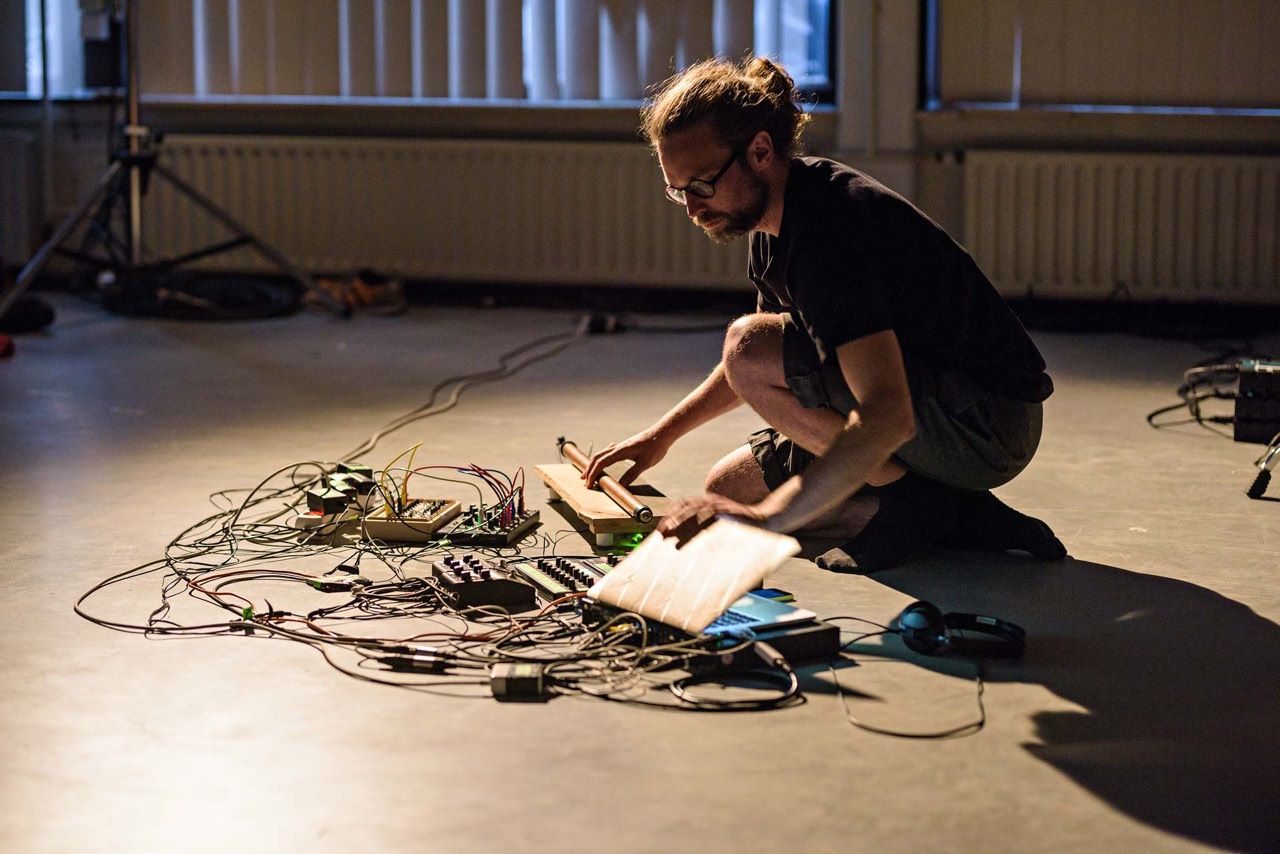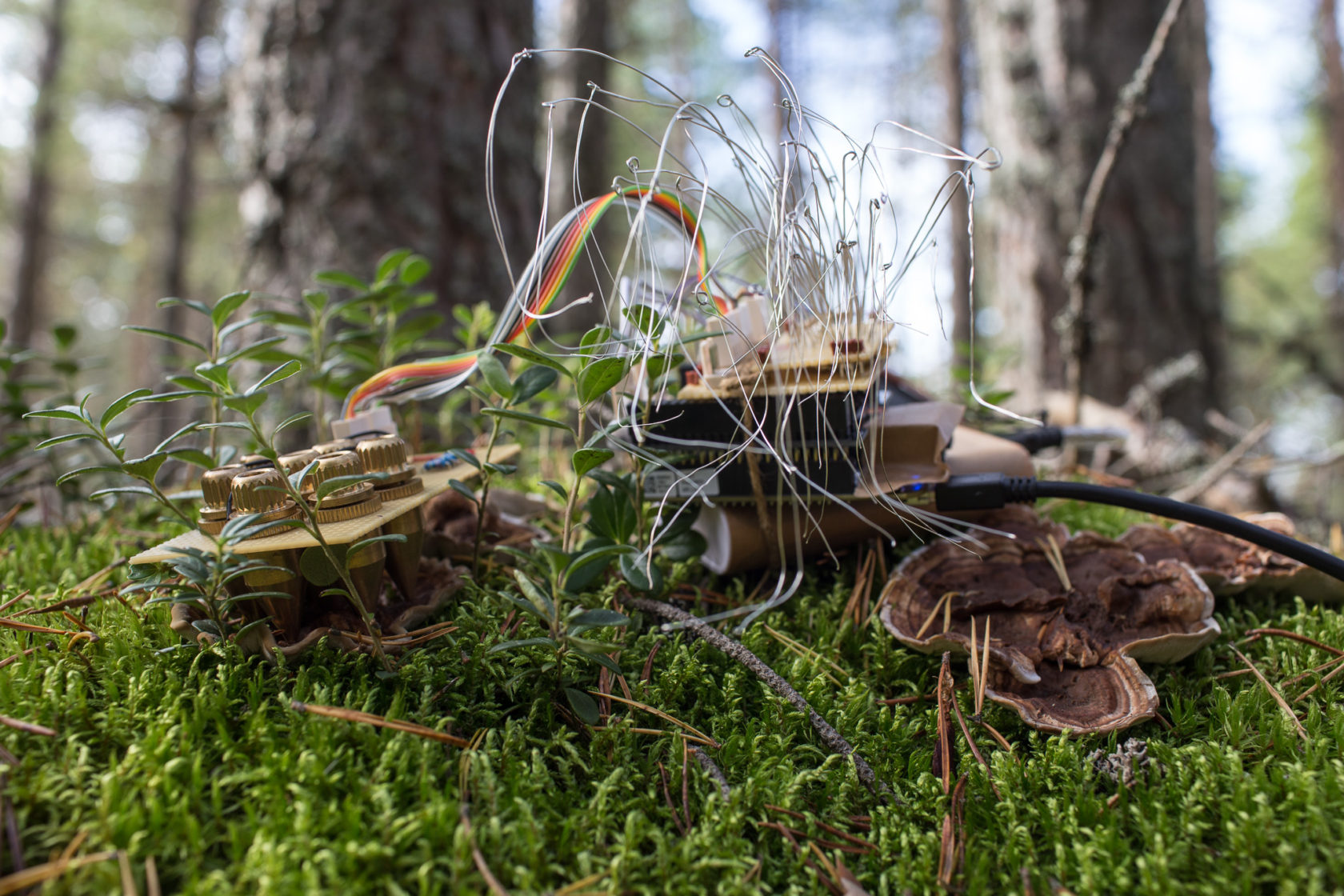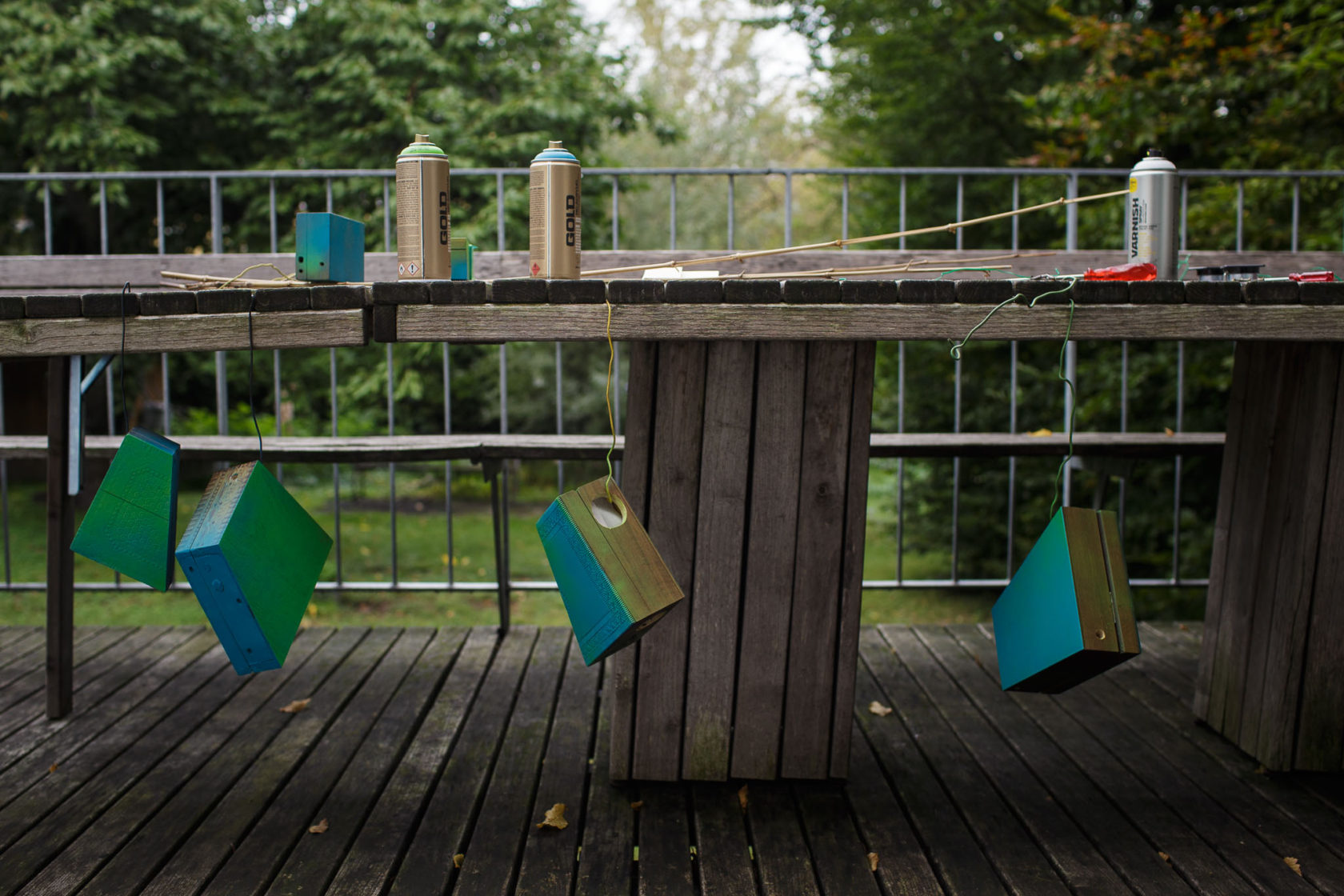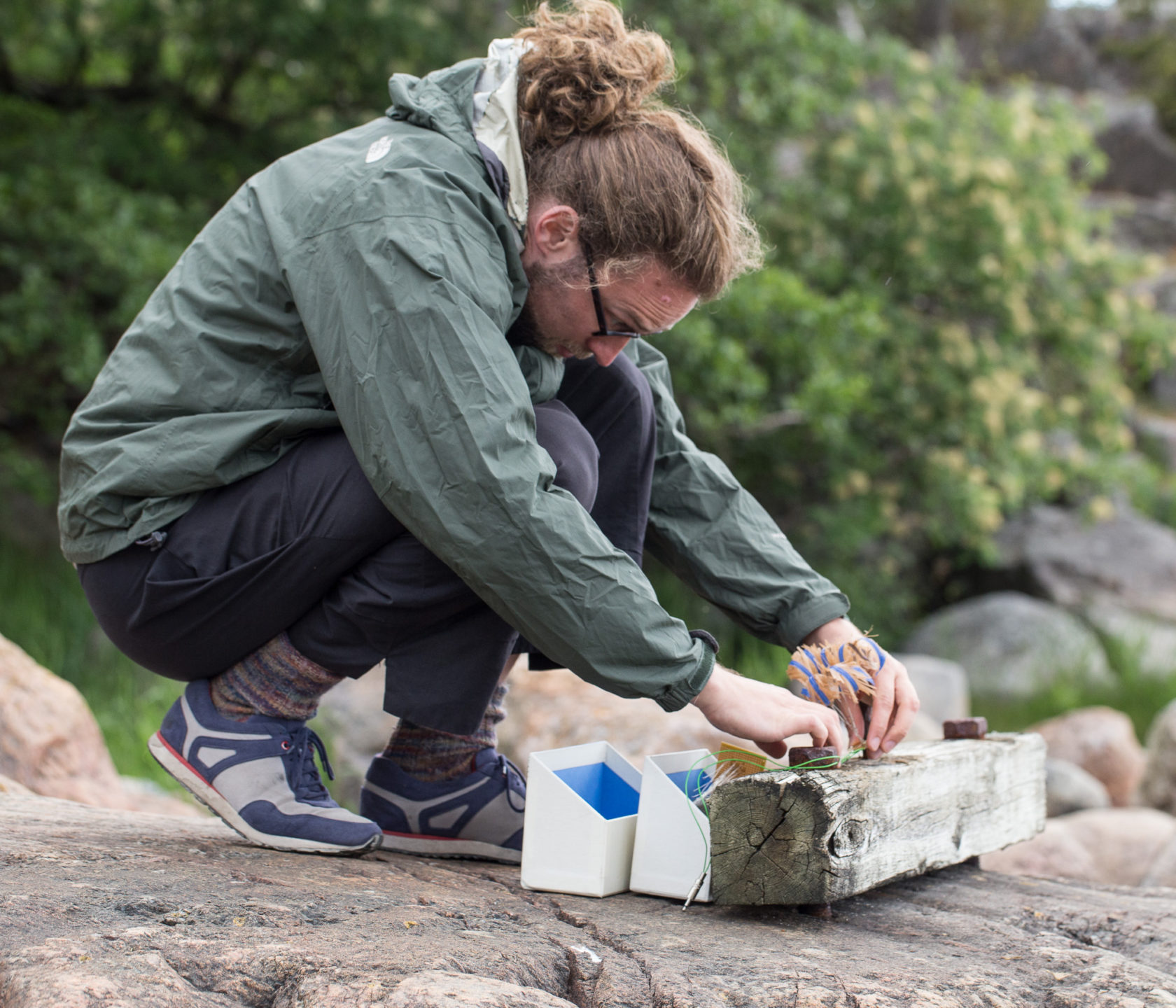iii Residency // Till Bovermann Interview
Till Bovermann studied and worked at Bielefeld University where he received a PhD for his work on Tangible Auditory Interfaces. Later, he worked as a post-doctoral researcher on tangible and auditory interaction at the Media Lab of Aalto University, Finland.
Among others, Till has been teaching instrument design and sound technology at various international institutions, among others the IMM in Düsseldorf, at Aalto University and at the institute for time-based media at UdK Berlin.
Since 2014, Till has been the principal investigator/UdK Berlin of the 3DMIN project on “Design, Development and Dissemination of New Musical Instruments”, a collaboration between UdK Berlin and TU Berlin. In his artistic works, he addresses the relationship between seemingly contradictory elements, e.g. the digital and physical realm. Till also develops software in and for SuperCollider and runs TAI-studio.org. Till performed on No Patent Pending #28 and will be offering a workshop on October 21st 2017.
I interviewed him, prior to his residency.

Can you tell us something about your work? What is your background?
My name is Till Bovermann and my artistic life is built on contrasts. I spend my life between Helsinki, a nordic city full of water, sun, ice darkness, surrounded by a moderate boreal landscape, and Berlin, a city that is full of the diversity that 3.5 Million people bring: unfinished dreams, lived imaginations, an anthropocentric topography, trash, filth and, more often than not, an emergent beauty.
I can imagine that as a 'sound artist' you are also very sensitive to sounds of the cities; can you typify both cities in sound?
It is very difficult to typify the whole city since there are many different areas… What is typical for me in Berlin are the loud birds that have to sing against the ever-present traffic noises of cars and trucks, sometimes even going over cobblestones. Helsinki on the other side changes a lot between the seasons, summer is quiet because many people leave the city, whereas in October, the soundscape changes drastically because cars are required to have studded wheels in winter. Especially on wet streets (a common sight during autumn/early winter), their sound is very prominent. Falling snow mutes the sounds a lot. Actually, there are very few natural sounds during the winter since the birds are gone.
RESEARCH: A wilderness improvisation during the Hybrid Matters’ Field Notes camp in Kilpisjärvi, Samiland 2015 with the ‘Sonic Wild Code’ group [Anja Erdmann, Till Bovermann, Kristina Lindström, Erich Berger, Antye Greie-Ripatti, Caspar Ström, Vygandas Simbelis, Dinah Bird]
You stated earlier that you are a trained computer scientist in the natural science (fluid with code and trained in scientific and engineering reasoning) Is it fair to say that you see the world differently?
Of course it is very difficult to tell whether I “see the world differently”; I can only speak for myself and do not know how others see the world :). But of course, my reasoning, my interpretation of what surrounds me, is based on my education; I tend to first analyze circumstances for their technical and structural components rather than look into social or societal implications. Which somehow makes me very aware of those, once I start thinking about them.
Yet, my work and thinking is driven by the grounds of social and humanist interaction. My intent is to translate observations into modes that can be heard, seen and shared with others. I attempt to establish cross-modal sensing without explaining or being upfront judgmental.
I see my artwork as my interpretation of these contrasting elements. I build tools for reflection, to let go of the all-encompassing hazzle, a space to discover new perspectives and insights on circumstances and phenomena that are normally taken for granted. I gained expertise in studying natural phenomena, like wind, water current and motion, with the intent to shift spectators’ experiences of them into something unusual, something that makes them listen.

A soundtrack has a drastic influence on how a scene is perceived. I consider Anemos Sonore (2011/2012) as my first serious artwork. It is an installation that invites visitors to stay and listen to wind-based, ambient sounds and thus slowly gaining a connection to the environment through sound.
In Anemos Sonore the listener is made aware of the wind but at the same time you hear, what you call, ambient sound. Do you see yourself (in this work) as a mediator between the natural elements and the audience? Or do you also tend / like to manipulate the audience (a bit)?
I try to be mediator but of course I am aware that I guide their focus. For me, Anemos Sonore (AS) has a lot in common with scoring a film; somehow adding a layer on top that somehow shifts the awareness of the spectator towards movement that is in accordance with the sound. We always search for coherence in our sensual perception, AS adds a coherent layer to the multi-modal experience of being at and observing a place.
Can you tell us something about your (planned) activities in your iii residency?
For the last months, I had the opportunity to be artist in resident at IEM Graz where I developed and constructed Fielding, a platform for inter-species music making (2017). Fielding consists of several, semi-autonomous “nodes”, each capable of sensing its environment and reacting on it by sound.
I spent the first part of my iii residency conducting basic research in technical and conceptual aspects of Fielding. For the second part of my iii residency, I intend to build electrodynamic wind and vibration sensors, which will add a new modality to Fielding (below first sounds Fielding)

You talk about "Fielding", a platform for inter-species music making, do you consider sound as another species?
No, rather as a mediator or platform for inter-species encounters. I think music creation is a powerful proxy for human cultural practice, especially in its contemporary form. If practiced together, music initiates contact and unites. Making music together establishes a bond: People start to care for each other, also in non-musical aspects. At the same time, everyone experiences music differently, and one cannot experience the same sound twice in the same way.
I intend to contribute to a change in perspective on inter-species relationships. I want to create space to nourish subjective inter-species empathy. Not because nature needs it but because we, humans, require a personal relation to something in order to care for it: No-one gives a shit for “the forest” or “the nature” or even “the dolphins” without a personal relation to them. In order to care, we need to identify, make friends. And making music is one way to create such a bond.
There will also be a workshop around Fielding, on october 21st in The Hague, which you can sign up for here
Can you depict and describe a theme or motive in your work?
I consider myself a researcher, broadly interpreting and acknowledging those traditions that were established by Alexander and Wilhelm von Humboldt: the inherent interrelation and dependency of research and education, as well as the exploration of earth and life for the sake of knowledge (in direct opposition to its domination).
Humboldt envisaged an ideal of Bildung (education in a broad sense, which aimed not merely to provide professional skills through schooling along a fixed path but rather to allow students to build individual character by choosing their own way). How do you incorporate that idea into your workshops / educational activities?
I consider my workshops and lectures as invitations to share and extend knowledge. Not necessarily my knowledge but also that of the participants. I hope that participants are not only curious to find out about something but also try to gain an understanding by probing it, and (constructively) questioning it.
Generally I am convinced that Bildung, i.e. the ability to ask the right questions (possibly to oneself), leads to a healthier society. We are in the middle of an age where the inherent complexity and interconnectedness of the world leads to the discovery of more and more fundamental and (human-) life threatening wicked problems which cannot be solved by breeding blind and naïve followers of populist parties but need more educated individuals with informed opinions and the will to question established world views.
I've read that Humboldt thrived to integrate the arts and sciences. And what I see in the Hague is lots of ArtScience / sound artists / computer artists emerging. Is there (still) a difference between a scientist and an artist?
Since this often gets mixed up, I’d like to differentiate between science and research: While science is, according to wikipedia, a systematic enterprise that builds and organizes knowledge in the form of testable explanations and predictions about the universe.”, research is, according to the Frascati Manual, “creative work undertaken on a systematic basis to increase the stock of knowledge, including
knowledge of humans, culture and society, and the use of this stock of knowledge to devise new applications.”
That is, while I think that science and art have very different ideas and motivations behind them, they certainly can use the same tools (i.e. research). While science is somehow fixed on research methodology as its core mechanism, artistic practice has the chance to choose its method set more freely and, IMHO importantly, is able to critically reflect on those methods.
